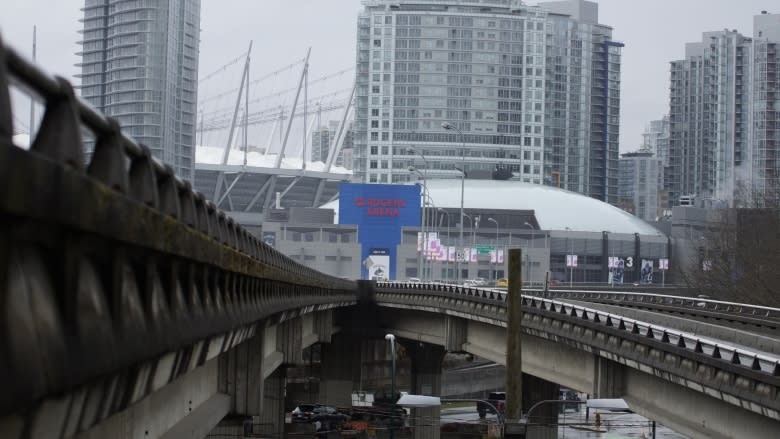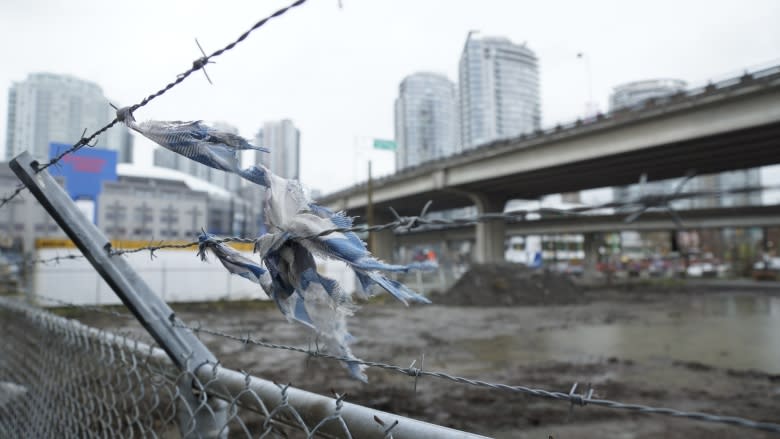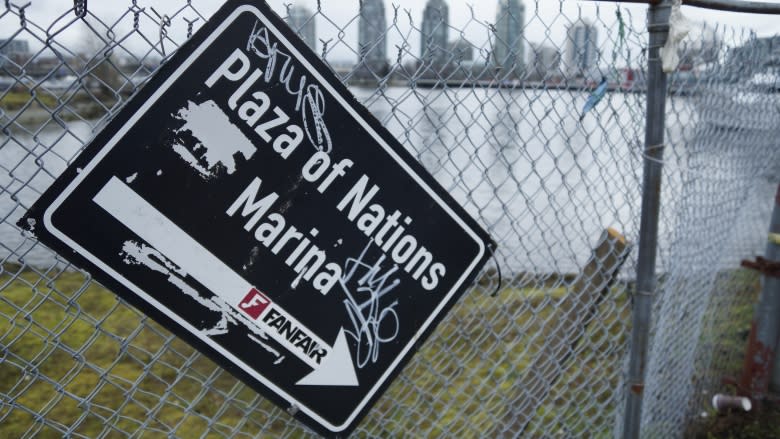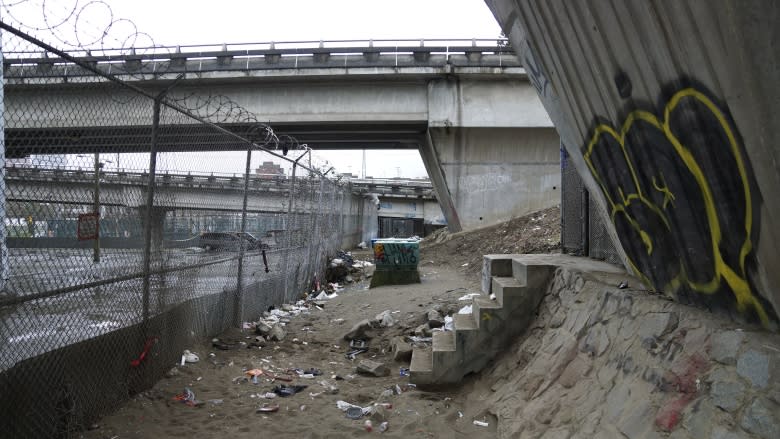Viaduct-free visions: Vancouver Champs-Élysées or lost public waterfront park?
The last piece of raw shoreline along False Creek is about to go from junk to jewel as the creek's scarred northeast end is nearly set for a long-overdue facelift. But, area residents are wary of promises of a dramatic transformation into a vibrant world-class boulevard.
In October of 2015, Vancouver city councillors voted to tear down the viaducts that link downtown and the city's east side.
By June, a draft plan will map out what False Creek will look like after the overpasses are gone. By year's end, construction could begin on turning the remnants of the viaduct into a grand boulevard interconnected with parks.
But some fear that the area's waterfront access will be bulldozed.
"[Creekside] should be an iconic park with easy access for everybody," said Patsy MacMillan, chair of the False Creek Residents Association (FCRA).
The FCRA does not want to see the 13.75-kilometres of promised $20 million worth of park space tucked into shade beneath the SkyTrain overpass sometime after 2025 — with the waterfront becoming a front yard for condo owners.
For now, the desolate land is lit at night in the green glare from the windows of residents in silent protest of the park they were promised.
"It looks like something from hell," said MacMillan.
Residents want to know what's next for the park, and are clear that they do not want concrete walkways and bike paths counted as green space.
"It's the crowning piece of False Creek," said retired city planner Ralph Segal.
Vancouver's Champs-Élysées
Segal is convinced that dismantling the viaducts will benefit all sides with amenities, creating Vancouver's version of the Champs-Élysées in Paris.
"One can understand the mistrust that's out there. But you are hard pressed to find somebody who will lose in this exercise," said Segal who hopes cranes start deconstruction before the end of 2018.
"Take a deep gulp and start doing it," Segal said.
City planners envision a transformation and better traffic flow once the viaducts are gone.
"It's a chance to heal this area," says Kevin McNaney, director of the project for the City of Vancouver.
"It's going to change from a place where people pass through to a place they want to stay and live."
He says to expect a mixed-used commercial entertainment district with up to 20 condo buildings growing in the shadow of the once looming viaducts and offering a number of amenities:
- Waterfront promenades.
- A wharf.
- Elevated bike/walkway.
- 13.75 kilometres of park/public space.
- A square at the foot of Georgia Street.
- Dozens of restaurants.
- Up to 20 mid-rise buildings or towers.
- 8,000 to 10,000 new residents by 2025.
- Commemoration of Hogan's Alley
The main Creekside Park encircles the end of False Creek and connects to Andy Livingstone Park in concept drawings.
There's also plans for a walkway along Dunsmuir Street up the 15-metre-grade into Vancouver, and an interconnected park designed by James Corner, creator of the High Line Park in New York City.
Two-way traffic would be diverted along a Pacific Boulevard, and in theory, avoid the traffic bottlenecks that are common on the viaduct.
A few snags
It's never that simple of course.
There will be surprises buried on the land filled in, where water used to flow under the viaducts years ago.
It's estimated there's some 4,000 dump trucks worth of contaminated soil on Concord Pacific land alone.
Where will that go?
And where will the park end up?
"It's a shell game," said MacMillan who is keeping her eye on the green space promised at the northeast end of False Creek on property that's been in contention for decades, even before Expo 86 reshaped it.
So this land — once slated for a freeway — still sits at the pinion of a fight over pavement.
False Creek residents hope Creekside Park preserves decent public access to the last stretch of the undeveloped shore — not just a peekaboo view through tower footings from a shadowy spot under SkyTrain tracks.






